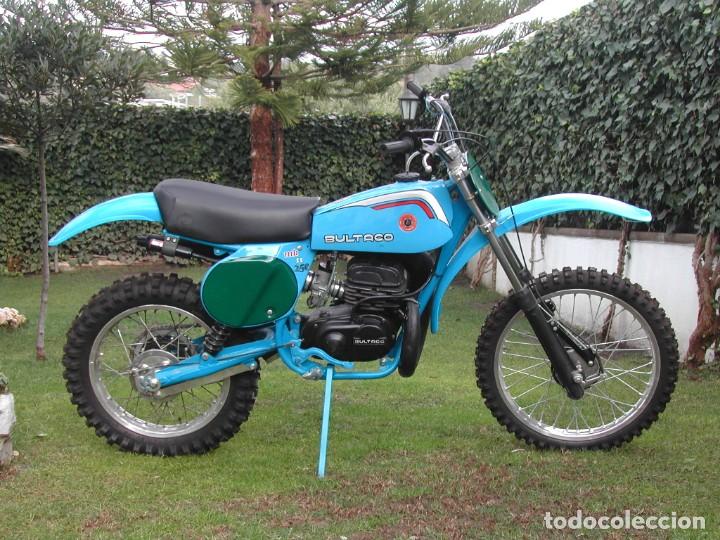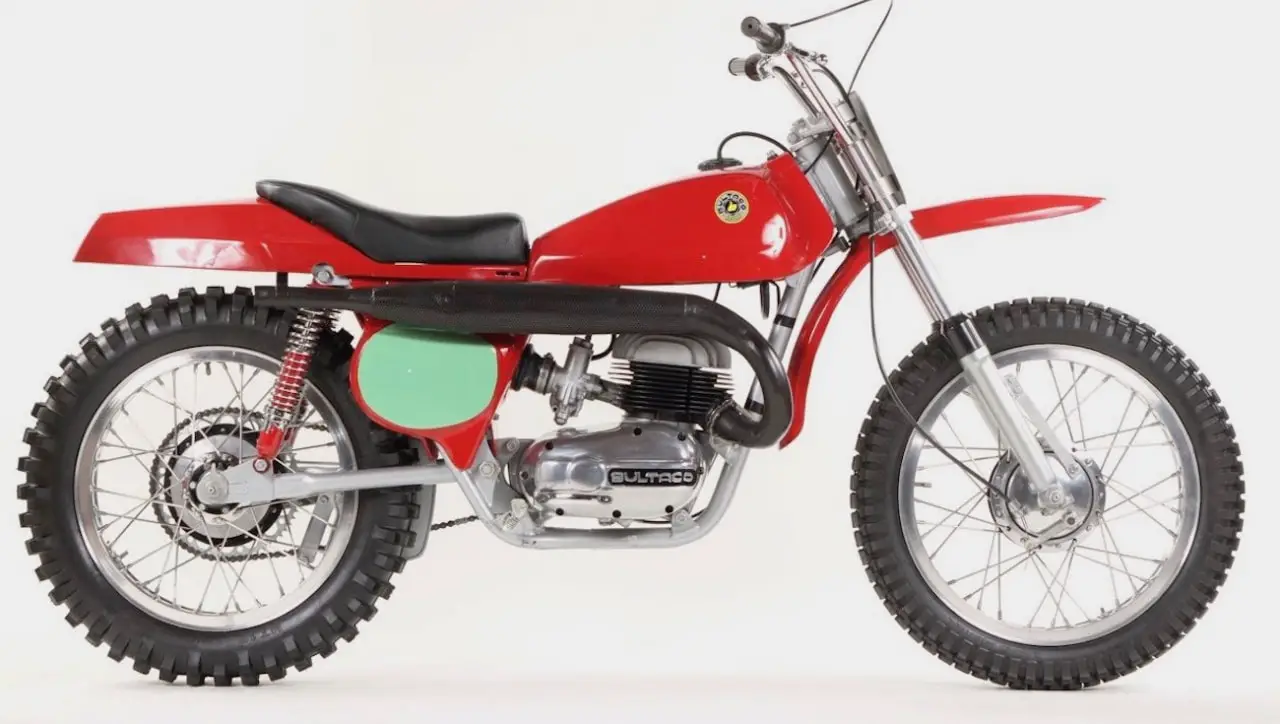



This was done not for any technical reason, but to keep the model in line with other engines. All this fit into a short wheelbase of 52.3 inches, with 11 inches of ground clearance-and the ability to dance around or over any obstacle.Ī minor change to the engine was made in 1974, decreasing the displacement from 244cc to 237. Drum brakes were adequate for the purpose of the Alpina. Wheels were Akront aluminum, wearing a 2.75 x 20 tire at the front, 4.00 x 18 at the back.

The Matador’s gearing was more suitable for a trail bike, blipping along for miles at a reasonable speed, rather than climbing up a mountainside in first gear.Ī steep Bultaco-built front fork gave 7 inches of travel, with Betor shock absorbers at the rear. A primary chain ran back to a wet clutch and 5-speed transmission which had been borrowed from the Matador, a model intended for the International Six Days Trial, the tranny of which was a bit beefier than that on the Sherpa. Kickstarter was on the left side, so those right-footers often stood beside the bike to start it. Ignition was by a Femsa magneto on the flywheel, which was used by many European two strokes, including the Spanish compatriots Ossa and Montesa and companies like Maico and Sachs. Also, a bracket ran from the cylinder head, secured by two head-bolts, up to the backbone tube of the frame just to ensure appropriate rigidity. They made sure the engine was properly balanced internally so as not to break the motor mounts, a not-unknown problem in those days.
BULTACO PURSANG MODEL 25 HOW TO
The slow-turning engine of the British thumper was very useful in putting trials-type power to the rear wheel, until Bulto and his engineers figured out how to do roughly the same with a two-stroke, using heavier flywheels. The Alpina weighed in at a very modest 217 curbside pounds (claimed), as opposed to an equivalent English 250 four-stroke single, which could run almost 300 pounds.
BULTACO PURSANG MODEL 25 FULL
This was a steel affair, pretty unbreakable, with a single downtube (in an effort to keep the frame as light as possible) splitting into a full cradle going under the engine. The new model was essentially using the same frame as the Sherpa, with slightly different geometry. To make the Alpina more useful and friendly, the gas tank was enlarged to 2.6 gallons, with a longer saddle and rear footpegs so that a passenger could be carried along. It was reliable, and capable of giving even a novice a pleasurable day of bashing the boonies. The Alpina was advertised as a trials bike, but in truth was more of a trail-riding machine, great for plunking along dirt tracks. The new Sherpa received a major do-over around 1970, and the projected Alpina was intended as the successor to the old Sherpa, being made a bit more manageable and rider friendly. Bulto loved racing, having been a successful competitor in his younger years, and what he liked to do was build a bike that could win races, and then turn out detuned versions for civilian use.īulto was constantly upgrading his machines, making them even more competitive. Over the 25 years of Bultaco’s existence, 1958 to 1983, probably a hundred models appeared, ranging in size from the 50cc Chispa (Spark) to the 370cc Frontera (Frontier). And then the Alpina, honoring Europe’s largest mountain range, and the model we will talk about here. The Sherpa celebrated the conquering of Mount Everest. The Matador was self-explanatory, denoting bull-fighting glory. Then there was the Metralla, or Shrapnel, and the Pursang-Pure Blood. The first Bultaco was the Tralla, or Whip. The bikes were strong, light and dependable, and this was when most of the racing was done by individuals, rather than factory-supported riders. In the 1960s his two-stroke singles took the checkered flag in everything from motocross to trials to roadracing. Señor Bulto had a simple plan when he started up the Bultaco brand in 1958: build great competition motorcycles.


 0 kommentar(er)
0 kommentar(er)
